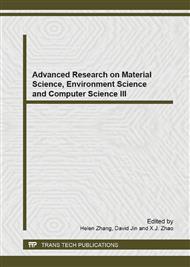p.469
p.473
p.478
p.484
p.489
p.496
p.501
p.505
p.509
Study of Lithium Bromide-Water Binary Solution in the Application of Hot Springs Geothermal Energy
Abstract:
The main geothermal resources in China are low or medium-temperature geothermal resources, these are more than 3000 hot springs, which of above 60 °C account for 24 percent of total, those are more than 720. In these hot springs bases for tourism and leisure and spa medical, the demand of electricity and air-conditioning is relatively large, so these is a very important practical significance to develop low or medium-temperature geothermal resources technology. If hot springs geothermal system uses lithium bromide-water azeotropic binary mixtures as working fluid, which not only reduces the heat loss of temperature difference, but also plays the advantages in thermodynamics and environmental aspects. Three systems of this article described all use water vapor as the working fluid, their characteristics are analyzed and compared, respectively. By analysis found that: when the demand is only for power generation and non-condensable gas content in hot springs geothermal water is not too high, the single-stage flash evaporation electrical system is more favorable; because of hot springs primarily for leisure travel and medical care function, and the demand for air conditioning and refrigeration is also large, so the combined system is more favorable.
Info:
Periodical:
Pages:
489-495
Citation:
Online since:
January 2014
Authors:
Price:
Сopyright:
© 2014 Trans Tech Publications Ltd. All Rights Reserved
Share:
Citation:


